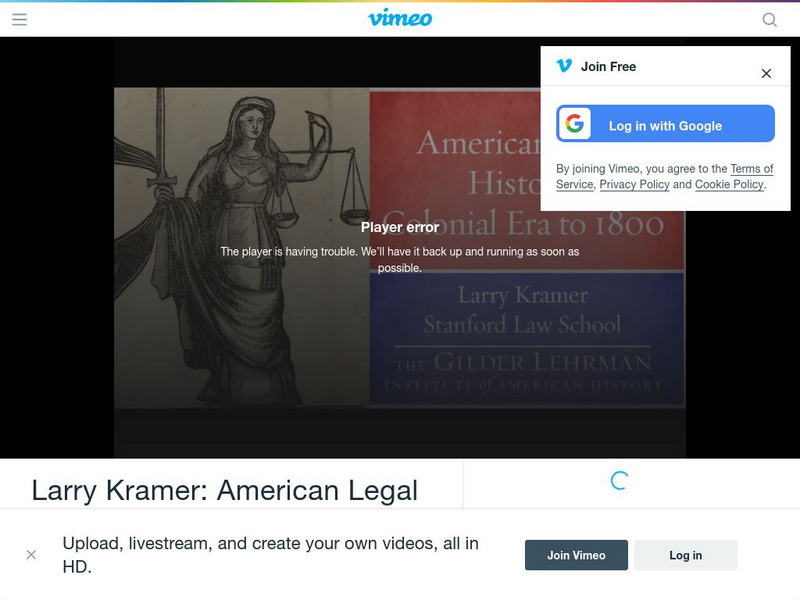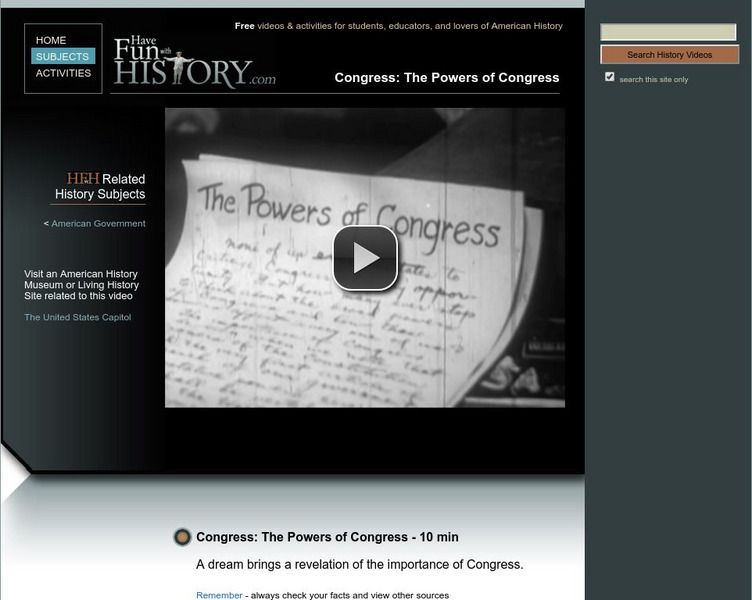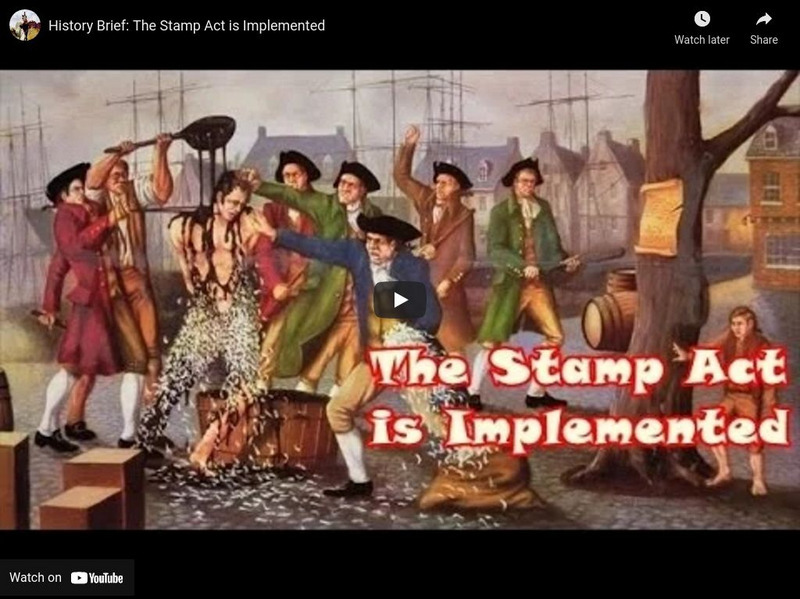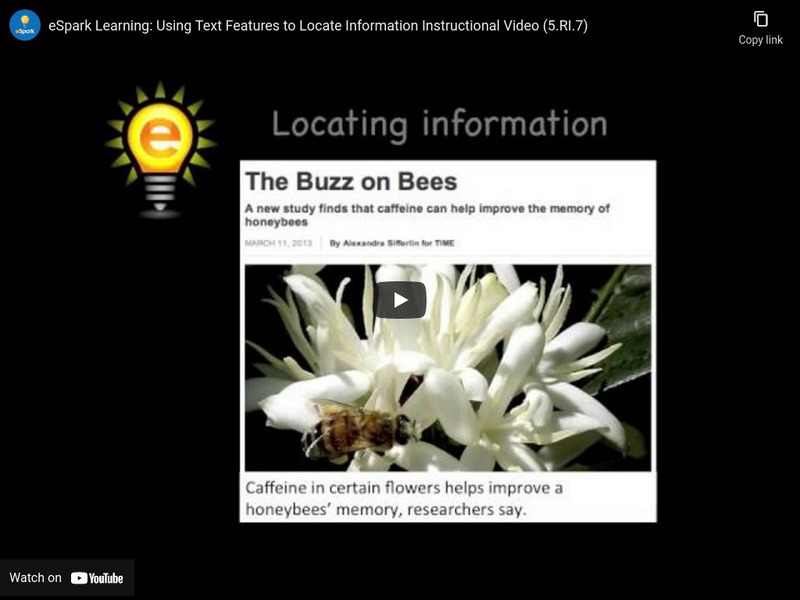Hi, what do you want to do?
Library of Congress
Loc: congress.gov: The Legislative Process
A collection of short videos that explain the different stages of the legislative process, including the introduction and referral of bills, debate by a committee, placement on a calendar for discussion about whether it will be sent to...
Gilder Lehrman Institute of American History
Gilder Lehrman Institute: American Legal History: Colonial Era to 1800
A presentation by Larry Kramer detailing the development of constitutional law, common law, rights and the judicial system of the new government in the just independent United States. Understand and identify the meanings of how the...
Other
Congress.gov: The Legislative Process
The process of a bill becoming a law is rarely predictable and can vary from bill to bill. For a general overview of this process, watch the following video which explains the path most bills take to become laws. [5:10]
Backstory Radio
Back Story Radio: Stuck: A History of Gridlock
BackStory episode examines the topic of legislative standoffs in Congress by looking at the history of Congressional gridlock and evaluating the outcome. Audio and transcript are provided.
Annenberg Foundation
Annenberg Classroom: The Legislative Process: How a Bill Becomes a Federal Law
Video [19:00] in which Senator Diane Feinstein and Representative Pete Sessions discuss with a group of high school students the legislative process. An informative explanation with visuals and anecdotal information to support...
Have Fun With History
Have Fun With History: Congress: The Powers of Congress
Mr. Williams drops off to sleep for a few minutes to find himself confronted with a world in which Congress has been suspended and federal authority dissolved.
Have Fun With History
Have Fun With History: Meet Your Federal Government
An introduction and overview of the structure of the U.S. government. A high school senior discovers the makeup of our federal government and how the three branches of government work. [15:00]
Center For Civic Education
60 Second Civics:the Elements of Democracy Part 86:features of Constitutionalism
Today we learn some of the key features of constitutionalism.
Center For Civic Education
60 Second Civics:the Three Branches of Government:broad Versus Enumerated Powers
How broad should be the powers of Congress? The Virginia and New Jersey plans proposed different visions of legislative power.
Center For Civic Education
60 Second Civics: Introduction to Congress
Explains the role of Congress in the American government, as a representative of people and of the states.
Center For Civic Education
60 Second Civics: How Congress Functions: Pt. 15: Resolutions
Resolutions in Congress can be simple or joint. They can be proposals for laws, for constitutional amendments, or for other matters.
Center For Civic Education
60 Second Civics: How Congress Functions: Pt. 16: How a Bill Becomes a Law
The lengthy process a bill must go through before it becomes a law is explained.
Center For Civic Education
60 Second Civics: How Congress Functions: Pt. 17: Bills in Committee
Bills are assigned to one or more committees when they first enter the House of Representatives or the Senate. They are examined, amended, then go to a hearing, which is often public, for further scrutiny.
Center For Civic Education
60 Second Civics: How Congress Functions: Pt. 18: Mark Up Sessions
Mark-up sessions are committee meetings that happen at a later stage in the process a bill goes through before a final vote in the Senate or the House.
Center For Civic Education
60 Second Civics: How Congress Functions: Pt. 19: Conference Committees
A conference committee is comprised of members from both chambers of Congress. It tries to resolve differences between the House and the Senate over the content of a bill. It issues a conference report to both chambers for a vote.
Center For Civic Education
60 Second Civics: How Congress Functions: Pt. 20: Vetoes and Overrides
Even when a bill is passed by Congress, it still must be signed by the President, who may decide to veto it. If this happens, Congress can also override that veto through a new vote in both chambers.
Center For Civic Education
60 Second Civics: How Congress Functions: Pt. 21: Majority Support
At every stage in the process of becoming a law, a bill is scrutinized and must have majority support for it in order to be moved along.
Center For Civic Education
60 Second Civics: How Congress Functions: Pt. 23: Landmark Legislation
Landmark legislation is created by Congress when there is a need for it, such as to address inequality or to protect workers' rights.
Center For Civic Education
60 Second Civics: How Congress Functions: Pt. 24: How Legislation Is Initiated
Describes the reasons that a member of Congress initiates a new piece of legislation, things that need to be considered in proposing it, and resources available to them for a thorough analysis.
Center For Civic Education
60 Second Civics: Congressional Power to Regulate Commerce.
Today we examine the power of Congress to regulate commerce.
Imagine Learning Classroom
Learn Zillion: Determine the Central Idea of a Nonfiction Article
In this lesson, you will learn how to determine the central idea of a text by determining the topic and asking what the author says about it. [6:57]
Other
Reading Through History: History Brief: The Stamp Act Is Implemented
Brief video explores the implementation of the Stamp Act and the subsequent colonists' reactions. [4:32]
eSpark Learning
E Spark Learning: Using Text Features to Locate Information (Ri.5.7)
This video explains how to find the central idea and identify text features in print or digital nonfiction text. It uses several engaging articles as examples including one about a machine that splits Oreo cookies. [7:42]
PBS
Pbs Learning Media: Common Sense Ed: Identifying "Fake" News: Resources
What is "fake" news? How do we know it's false? Use these resources from Common Sense Education to help students investigate the way information is presented so that they can analyze what they read and see on the Web. This resource is...













